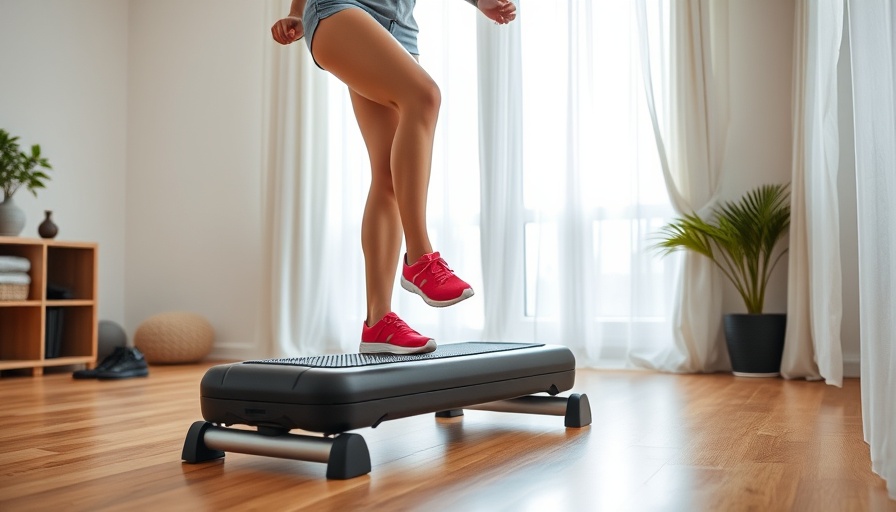
The Benefits of a Quick Upper Body Workout for All
In today's fast-paced world, finding time to exercise can be challenging, especially for individuals striving to balance faith, work, and personal commitments. The recent workout video, "Quick No-Repeat Upper Body Strength: Under 20-Minute Chest, Back, and Arms Circuit" presented by Brian from fitnessblender.com, underscores a shift towards efficient workouts that cater to busy lifestyles. This 20-minute routine focuses on upper body strength, utilizing dumbbells to facilitate muscle building without needing a lengthy commitment. It’s a reminder that fitness doesn't have to be dictated by duration, making it accessible to anyone, including those in the SDA faith community, who may prioritize communal gatherings or family obligations over lengthy gym sessions.
In 'Quick No-Repeat Upper Body Strength: Under 20-Minute Chest, Back, and Arms Circuit', the discussion dives into the benefits of efficient workouts.
Understanding No-Repeat Workouts
No-repeat workouts are gaining traction among fitness enthusiasts for their time efficiency and muscle activation. A no-repeat format allows participants to engage with a variety of exercises, minimizing fatigue in one area while maximizing overall strength training. In the highlighted workout, Brian demonstrates 12 movements targeting major muscle groups—chest, back, and arms—without repeating any exercises. This approach keeps the routine fresh and motivates individuals to push through their workout without the dread of redundancy. Additionally, it instills a sense of accomplishment after completing a challenging, fast-paced workout—perfect for those with busy schedules.
How Comfort and Equipment Affect Your Workout
Brian recommends having light, medium, and heavy dumbbells to accommodate various fitness levels. This flexibility is crucial, especially for newcomers to exercise or those recovering from injuries. As highlighted, modifications, such as using lighter weights or bodyweight exercises like push-ups, allow participants to tailor the workout to their own capabilities without feeling overwhelmed. It's important for the SDA community and others with similar beliefs to understand that physical fitness can align with their values—encouraging health while fostering community engagement through group workouts.
Addressing the SDA Faith Community's Fitness Journey
Many members of the SDA faith community prioritize health as a means of honoring their bodies, which are viewed as temples of the Holy Spirit according to their belief system. Engaging in a quick workout like the one presented by Brian not only benefits physical well-being but also contributes to spiritual resilience. This alignment between faith and fitness highlights an important cultural connection, infusing physical exercise with deeper meanings. The act of taking time to strengthen one's body can be viewed as a commitment to God’s temple.
Completing the Cycle with Warm-up and Cool-down
A hallmark of a well-structured workout is the inclusion of warm-up and cool-down phases. The 20-minute workout's organized phases, from a warm-up that targets the muscles and joints to a cool-down that promotes recovery, reflect a holistic approach to fitness that respects the body’s needs. This practice of ensuring all aspects of the workout are in balance underlines the importance of self-care, promoting health spiritually and physically.
Future Trends in Fitness for Busy Lives
As our lifestyles continue to prioritize speed and efficiency, the fitness industry will likely evolve toward more adaptable formats like no-repeats or quick circuit sessions. This trend serves not only the time-strapped individual but also reinforces the idea that fitness can be molded to fit any life, especially one rich with commitments like those upheld in the SDA community.
Actionable Insights for Readers
Whether you are a seasoned athlete or just beginning on your fitness journey, understanding the importance of flexibility in your workout routine can lead to long-term success. Consider integrating circuits from the video into your week, adapting them based on your own equipment availability and preferences. Evaluate what types of workouts resonate with your existing schedule and faith commitments, aiming for balance through a well-rounded approach to health.
Emphasizing the Personal Connection to Fitness
Lastly, it’s essential to recognize how viewers may relate personally to the presented routines. Fitness is not just about physical appearance; it’s about adopting a mindset of strength and resilience. Every push-up completed or weight lifted contributes to a greater sense of accomplishment, reminding us that our bodies are capable of more than we often believe.
As you reflect on your approach to fitness, consider Brian's insightful session as not just a workout, but a catalyst for greater health, deeper faith, and a step toward living your best life.
 Add Row
Add Row  Add
Add 




Write A Comment